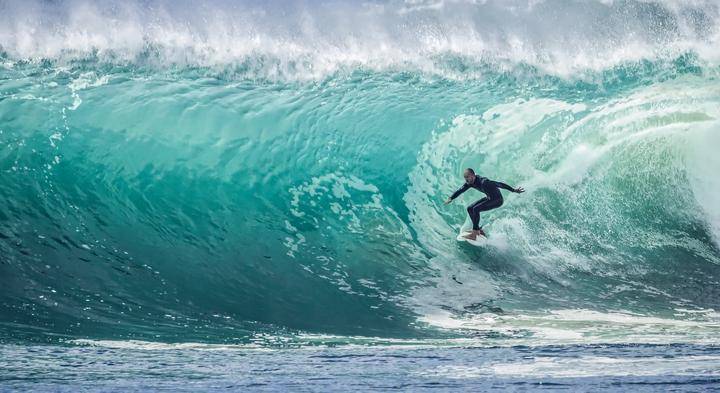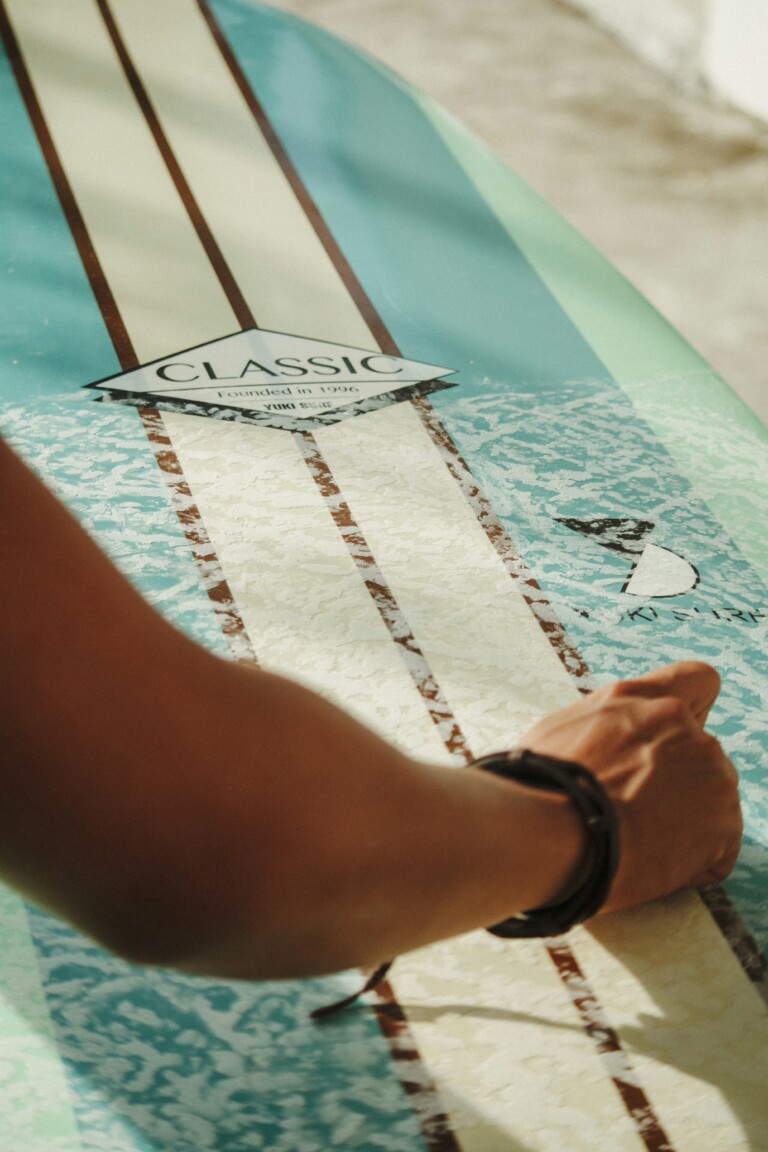Surfing is most likely unlike any extreme sport out there. There is a lot you have got to learn before you can hang with the big boys and girls. One thing that sets a Barney from an aspiring surfer is understanding the fundamentals. One such fundamental is learning to pick the right wave. Before we delve too far deep into the depths, let us get some beginner terms down:Stalling the board. It is a basic move that every surfer should know, and forums are full of questions about it. Stalling is learning how to lift the board out of the water for that brief moment in order to allow the wave to pass underneath you and the board. It is also called “kicking out the wave.” You do this by placing all of your weight on your back foot and then lifting the front of the board out of the water. Consider this move your savior when you see an obstacle headed your way, or a particular wave you are riding just ain’t happening.
Accelerating the board. When you begin to see the foam at the crest of a wave, you’re going to want to start accelerating to get out of a pocket. There is no one style that you are forced to adopt in order to succeed at this; you will see many different styles out there. Surf boards are built for speed, so accelerating will allow its rider to accelerate in order to do tricks. Pros can accelerate several times in one set.
Trimming. Trim is the angle path across the face of a wave. This allows a prolonged glide. It doesn’t take too much effort on the surfer’s part; just relax and ride the wave (no pun intended).
Carving Turns. Skiers, snow borders, and skateboarders also carve turns in their own ways. For a surfer, carving a turn in surfing is considered to be a “full rail” move because your feet should be evenly distributed. Try and angle the board at 45 degrees. Though your feet will be evenly weighted, you will be using your back foot’s weight for steering the board. Your rail should be “set in the wave,” allowing you to carve it.
There is definitely much more to these terms than provided, but we only wanted to give you a general idea about them before we get into picking a good wave. If you pick the perfect wave but don’t understand these four aspects, then you’ll be dead in the water long before you had a chance.
With that said, let’s discuss the realm of choosing a good wave.
Surfing takes contemplation. It may not seem like that in the movies, but in reality, that’s what it all boils down to. Though it isn’t wise to surf alone, the ideal time and place to surf is when there are as few surfers as possible. This is because among looking for that nice wave to pounce on, you have to focus on the crowd that is also focusing on the same things you are.
Look at your board: Is it a long, minimal, or short board. This will play different factors as to how far out (or in) you want to go. For short board people, you won’t go as far out as the minimal or long boarders. So, even before you start hunting for waves, you have to know what kind of surfing you want to start out with, and that means picking the right board.
Now that we are out of the local surf shop, new surfboard in hand, let’s go to the beach and start reading waves.
Waves are like the palm prints of the ocean. You can pretty much predict how each wave will behave as it comes in closer to shore. It is this aspect that makes the difference between a pro and a newbie. Now, look at the line of the horizon. As the sets are heading to shore, compare them to that line on the horizon. After you find the highest point of the wave, the side with the steepest “angle” is the breaking wave’s direction. That is the direction you should ride.
Now it is time to paddle out and choose where you will wait for that perfect wave. You want to paddle for flat swells. That wave might look small on the surface, but underneath the surface, there is a current that is going to gradually push that wave up the closer it comes in shore. If you miss this opportunity, then you will have wasted a lot of energy, placing yourself out of the path of the next wave. Or you can end up having a wave crash down on you, which will make you more tired as you try to recover.
For the ultimate success rate, it would be advisable to paddle for already half-built swells. This will give you a good chance to enter into the wave in a manner that allows him or her momentum, and essentially the speed needed to set up and ride the wave.
So, there you go. Even though this information isn’t exactly detailed, it should give you enough knowledge to offer a starting point. Surfing is a science, and as with any science, it takes years, even decades to master it. ITherefor, stay patient and keep getting back on that board after every wipe-out. Happy surfing.
















